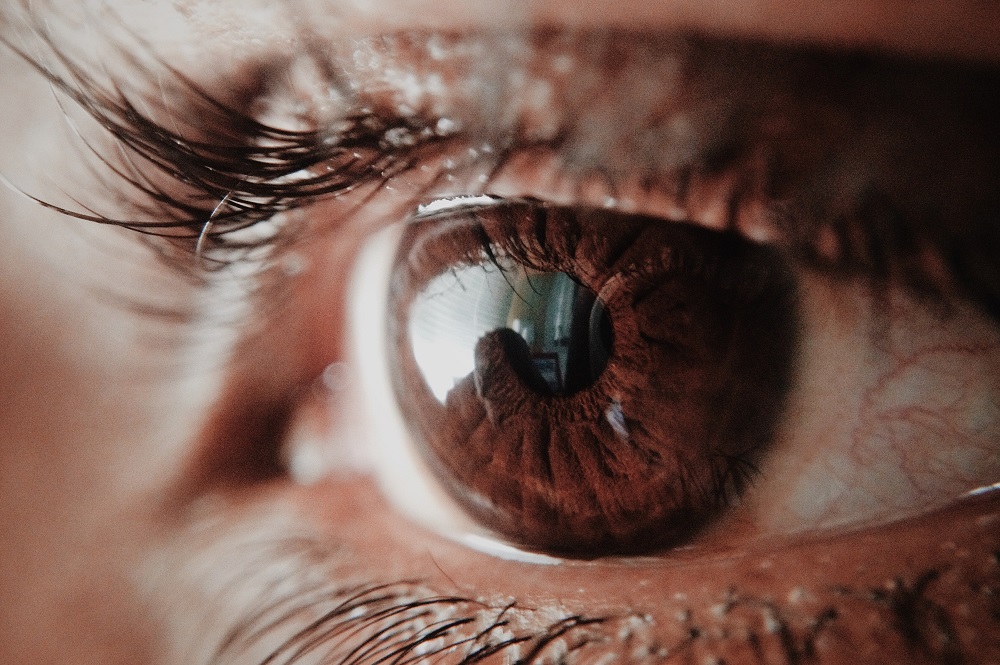A patient recently asked me if I think that the universe offers messages about things to focus on, things to let go of, and direction to take. I answered that the older I get, the more I believe that to be the case. I also, however, believe that things are not set in stone; that just because that message is delivered, doesn’t mean it can’t be changed. I’m not a fatalist. So, when a particular item seems to keep coming up, I look for meaning.
In the last few weeks, since I took a TCM course on eye health, I’ve had several patients tell me about their eye conditions. I’ve also personally noticed an increasing need to use my reading glasses. My arms just aren’t long enough to allow me to distinguish a “0” from a “8” from a “3” when written in small print, and sometimes guessing is not a good plan.
So, since I keep sending out basically the same eye exercises, eye relaxation, and eye health tips, I thought I’d write a blog to share with everyone. After all, it’s a good idea to address eye health, even before your vision starts to blur.
Eye Health Basics
When I was in university, my headaches started to get worse. I went to my doctor who thought it might be from eye strain from all the textbook reading I was doing and papers I was writing. Now, when I was in university, personal computers were available, but I (and most of my classmates) didn’t own one, so almost everything I read was on paper. It would be even worse now, with all the backlit screens fatiguing the eye muscles even faster!
- My first eye health tip is to take frequent breaks. Often called the 20/20/20 rule, every 20 minutes or so, take 20 seconds or more to look 20 feet or more away when you are spending a lot of time with your vision focused up close–reading, studying, gaming, writing, texting, emailing, web surfing, scrolling, or watching tv or videos.
- Hydrate. Make sure to drink enough water throughout your day. All your tissues need sufficient fluid to keep them healthy, and your eyes are certainly no exception.
- Get enough sleep. Have you noticed your eyelid twitching incessantly? Ask yourself if you’ve had enough sleep. Note that I hear time again from patients who swear that 6 hours a night really is enough for them. That may be true. But, I also know you may be fooling yourself. I used to believe this about myself. But, truthfully, after several days of only 6 hours of sleep, I would need to play a bit of catch up on the zzzzzs.
- Eat healthy. I’m sure that’s no surprise to you. Make sure to eat brightly coloured fruits and vegetables–such as carrots, sweet potatoes, yams, oranges, grapefruit, and kiwi–rich in antioxidants that support your eye health. And, don’t forget one of Mother Nature’s favourite colours: include plenty of dark leafy greens. Omega 3 fatty acids are key anti-inflammatory nutrients that support healthy eyes. They are found in fatty fish, nuts, and seeds.
- Put the blue light filter on your backlit screen devices, at least setting it up so it turns on at sunset. Note that it will make your screen image a big orangish/yellowish.

Eye Exercises and Relaxation
There are many options for eye exercises and I don’t recommend doing all of these at one go, but you can rotate the exercises you do.
- Just as other muscles in your body need to stretch and move, so too do the muscles related to your eyes. Taking a deep breath in, look up with just your eyes (not your head). Breathe out and look straight forward. Blink. Inhale and look all the way to the right with your eyes. Exhale, look forward, and blink. Repeat with breaths in and out while looking to the left and down, just the same way. Do three of these cycles.
- Blink. Easiest exercise ever. But when we are focusing on something, like reading, our blink rate decreases considerably, contributing to eye strain, fatigue, and dryness.
- Practice relaxing the eyes. Sit or lie down comfortably. Rub your hands together until they feel warm. Close your eyes and cover them lightly with your cupped palms. Do not apply pressure on your eyeballs. Place your palms so that the nose remains uncovered and the eyes remain behind the slight hollow of the palms. Make sure that no light rays enter the eyes and leave no gaps between fingers or between the edge of the palms and the nose. You may still see other lingering traces of colour. Imagine deep blackness and focus on the blackness. Take slow, deep, even breaths, while thinking of a happy time or relaxing place. Once your eyes see nothing but blackness, remove your palms from your eyes.
- Close your eyes tightly for 3-5 seconds, then open them for 3-5 seconds. Repeat this 7 or 8 times.
- Sit and relax. Roll your eyes clockwise, then counter-clockwise. Repeat 5 times, and blink in between each time.
- Sit about 6 inches from the window. Make a mark on the glass at your eye level (a small sticker, black or red, would be perfect). Look through this mark and focus on something far away for 10-15 seconds; then focus on the mark again.
- Hold a pencil in front of you at arm’s length. Move your arm slowly to your nose, and follow the pencil with your eyes until you can’t keep it in focus. Repeat 10 times.
- Look in front of you at the opposite wall and pretend that you are writing with your eyes, without turning your head. It may seem difficult at first, but with a bit of practice it is really fun. The bigger the letters, the better the effect.
- Imagine that you are standing in front of a really big clock. Look at the middle of the clock. Then look at any hour mark, without turning your head. Look back at the center. Then look at another hour mark. Do this at least 12 times. You can also do this exercise with your eyes closed.
- Focus on a distant object (over 150 feet away) for several seconds and slowly refocus your eyes on a nearby object (less than 30 feet away) that’s in the same direction. Focus for several seconds and go back to the distant object. Do this 5 times.
- I’m also now trying out some apps that offer eye exercises with regular reminders to actually do them.
Eye Massage
Massaging around your eyes can help improve blood flow to the eyes. There are many acupuncture and acupressure points around the eyes, but even if you don’t get the points right on, just massaging the general areas is useful.
- Massage your eyebrows. On the medial side (closest to the nose) is a point called UB2 (BL2). In the middle of the eyebrow is an acupoint called yuyao. And at the lateral side (closest to the temple) is SJ23. You can use 1 or more fingers to apply pressure and make sweeping movements following the direction of the eyebrow hairs. Or you can pinch the eyebrows for a second or two (not too hard!), moving from one point to the next.
- Pinch (index finger on one side, thumb on the other) and press point UB1 (BL1) at the inside of the eyes. Gently apply pressure and release and reapply pressure 30-50 times. Make sure your hands are clean and your nails are short enough so you don’t give yourself an eye infection or injure your eye.
- Massage under your eyes, outside of the eye socket. With the eyes looking straight forward, the acupuncture point ST2 is in a small depression on the cheekbone, directly under the pupil. GB1 is a point found at the outside corner of the eyes, and qiuhou is halfway between ST2 and GB1.
- Apply pressure on the acupuncture points, taiyang, in the depression at the temples. These points often feels good when massaged with small circular pressure.
- Use the thumbs to apply pressure at the base of the skull, about halfway between the centre of the neck and the ears on each side. These points are often a bit tender and massage feels good.
- Not all the beneficial for eyes acupuncture points are local. Feel for the tender point on the back of each hand, in the muscle between the thumb and the index finger. This point is called LI4 and is called the “command point of the face and head.” Another of the most important eye health points can be found on the top of the feet, in the muscle between the big toe and second toe. Called LIV3, it has even been found that acupuncture at this point activates the visual cortex of the brain. Each point can be massaged with pressing and holding, pressing and applying small circular movements, and alternating pressure and release.
Get Eye Health Acupuncture and TCM Treatment
Goji berries (gou qi zi) are now a popular health food you can find in natural health food stores and even regular grocery stores. They are also a common Chinese herb touted for its benefits for eye health, among other things. They are rich in antioxidants, including vitamin C, zeaxanthin, and other carotenoids. You can add goji berries to hot water and drink them regularly as tea (make sure they are good quality) or add them to oatmeal or other foods.
Other supplements that might be considered include:
- Astaxanthin
- AREDS
- Omega 3s
- Lutein
- Bilberry
In TCM, it’s all about the correct Traditional Chinese Medicine diagnosis so we can choose the right acupuncture, herbal, nutritional, and lifestyle recommendations. So come in for a TCM appointment to learn what you personally can do with my customized treatment plan–the universe may be pointing you in that direction!


Recent Comments